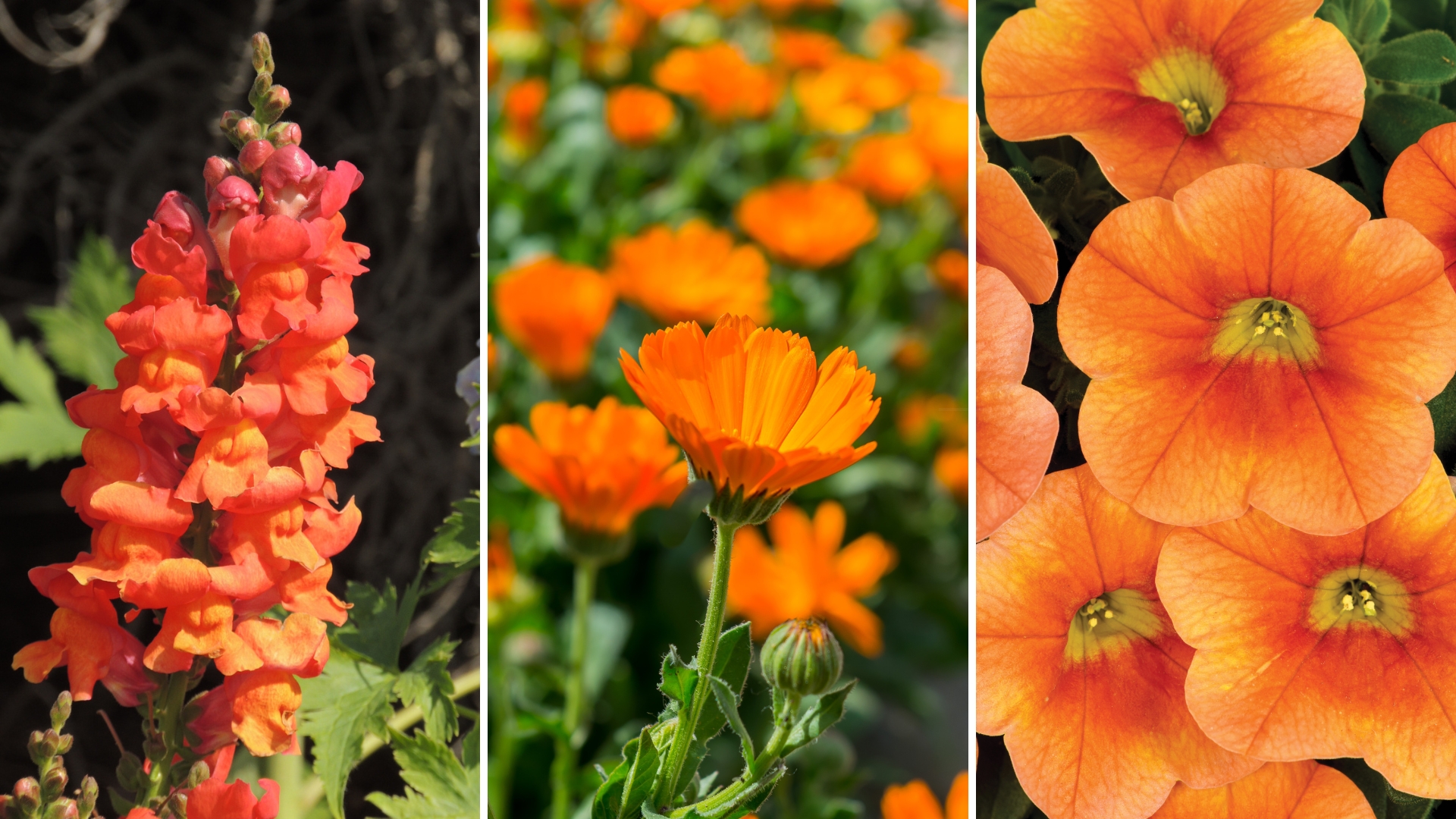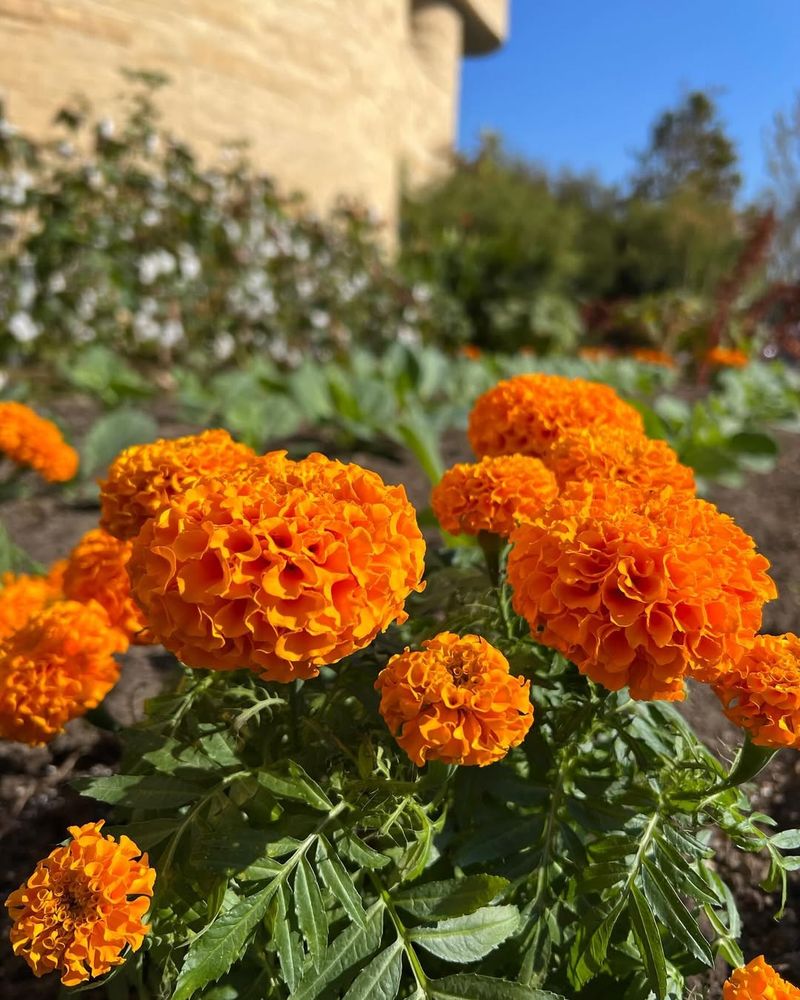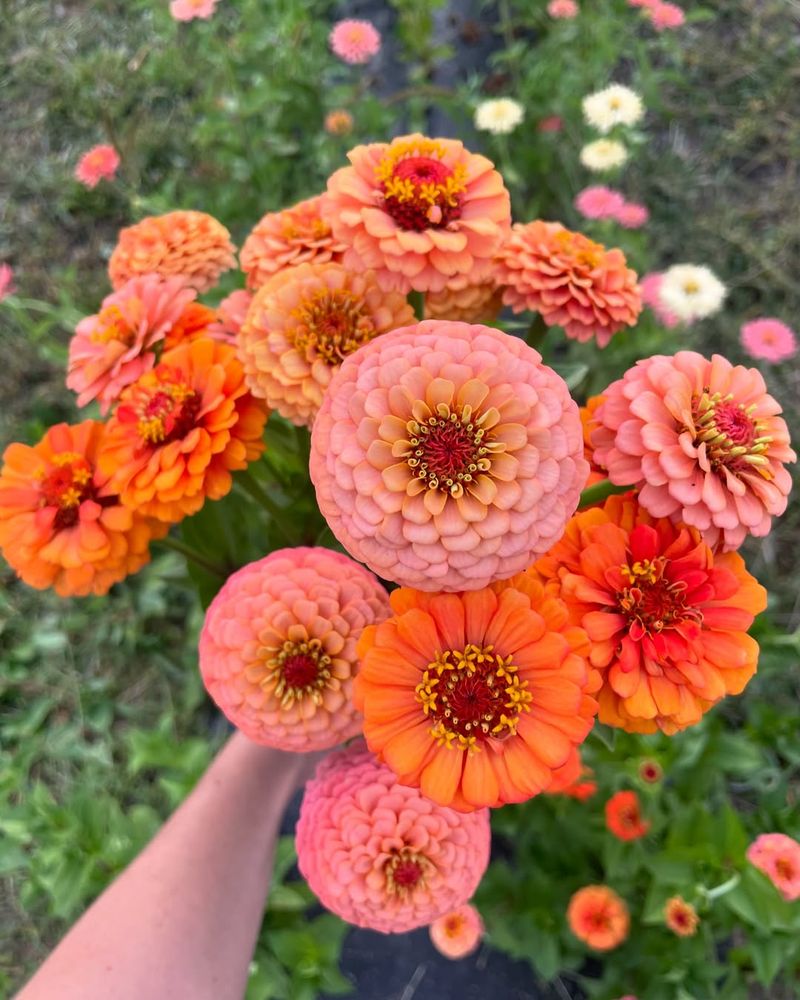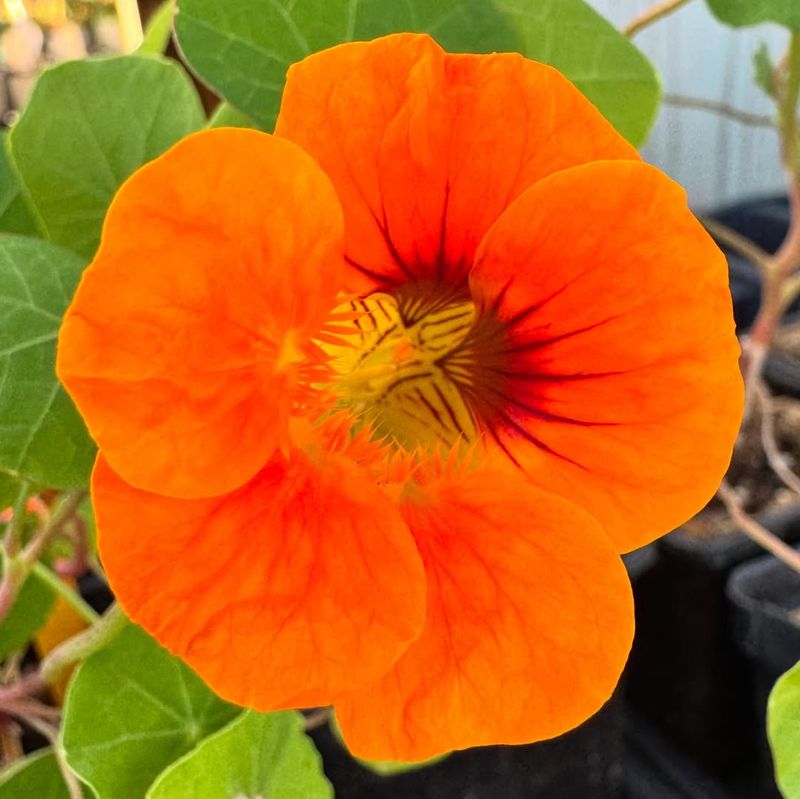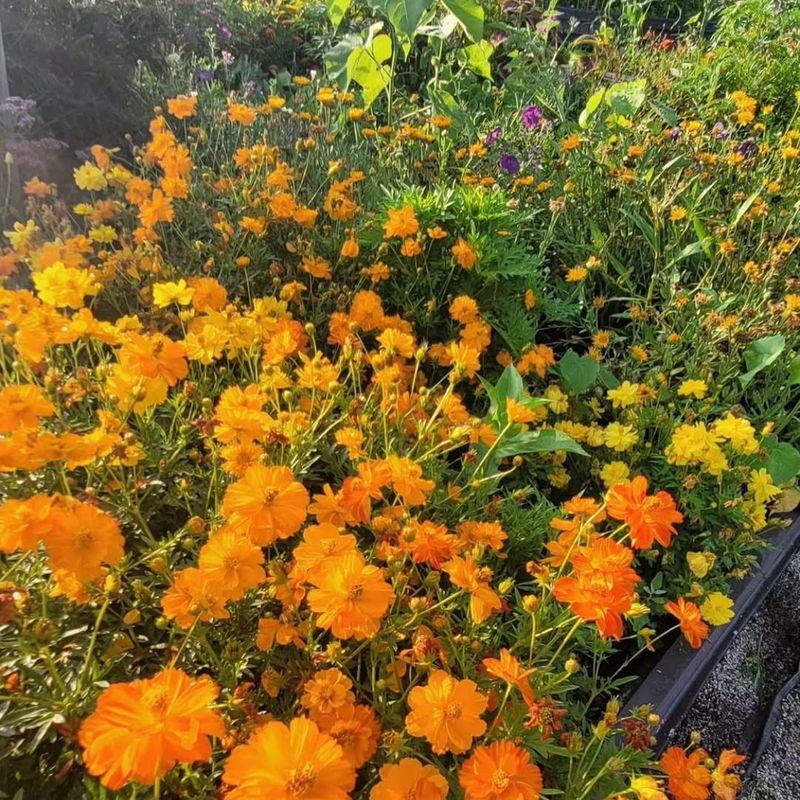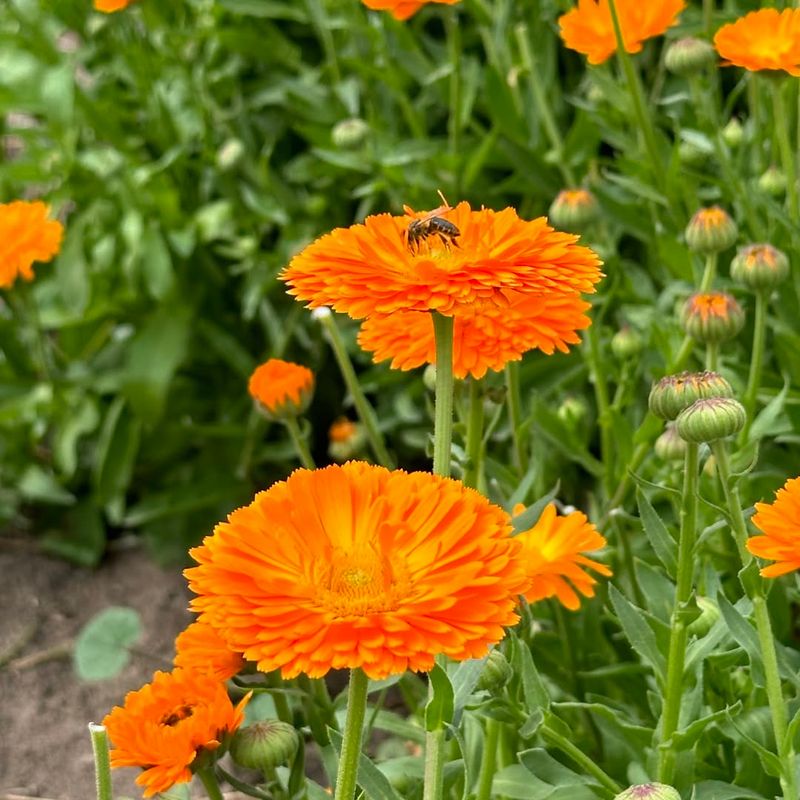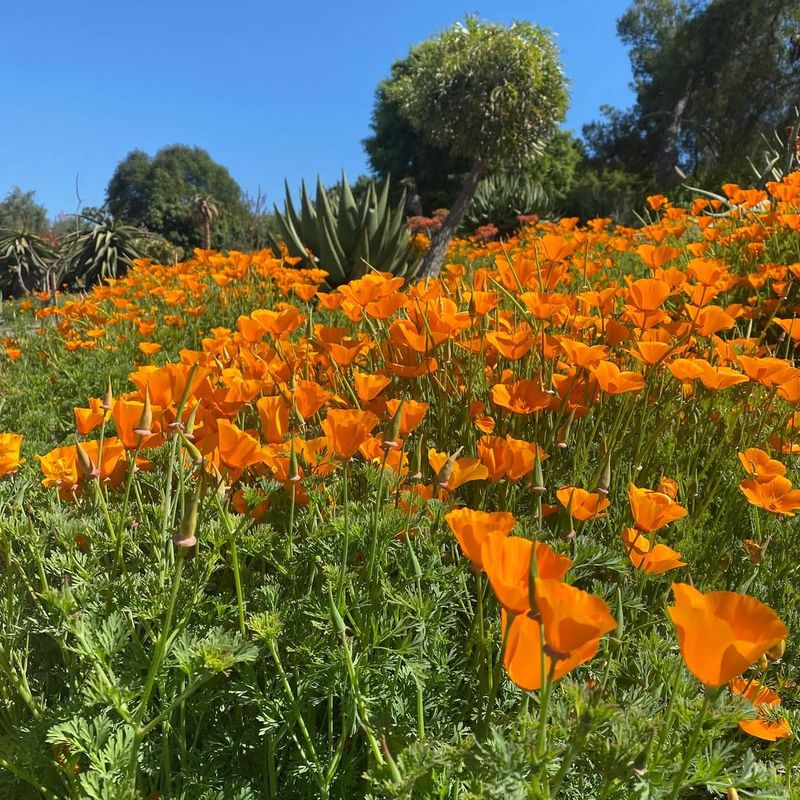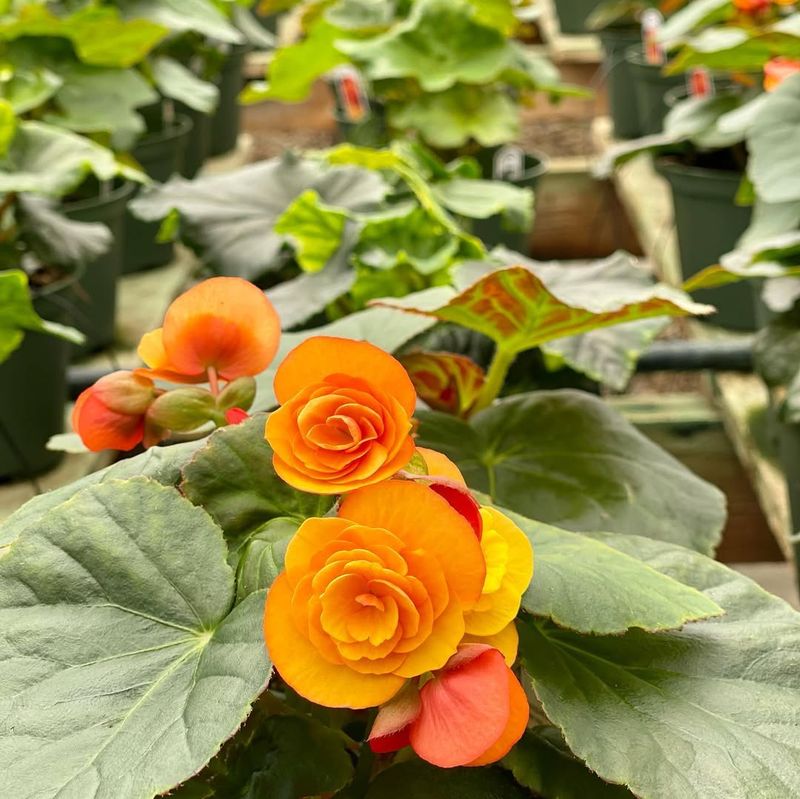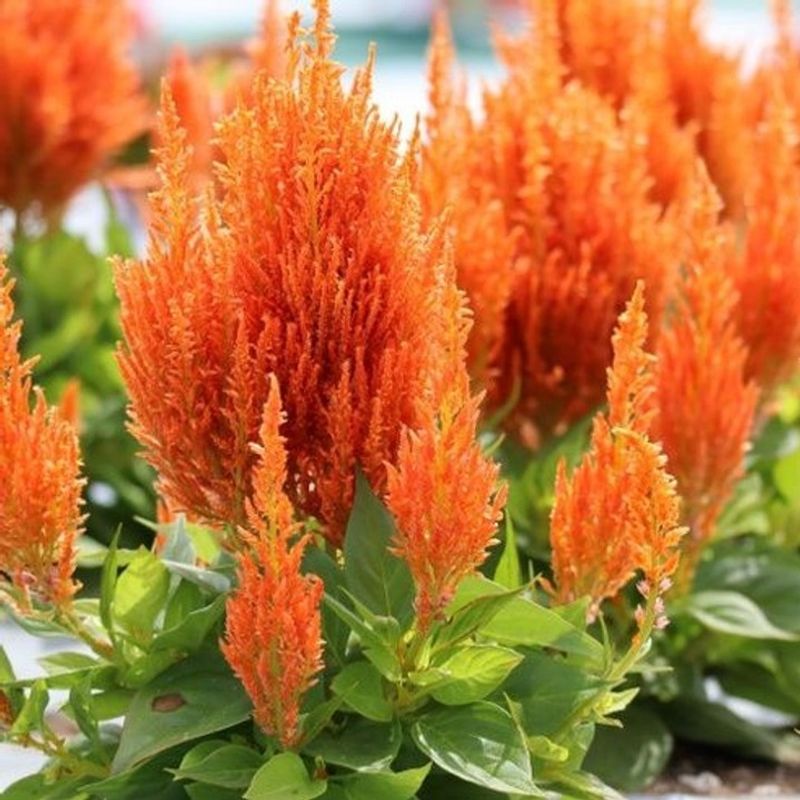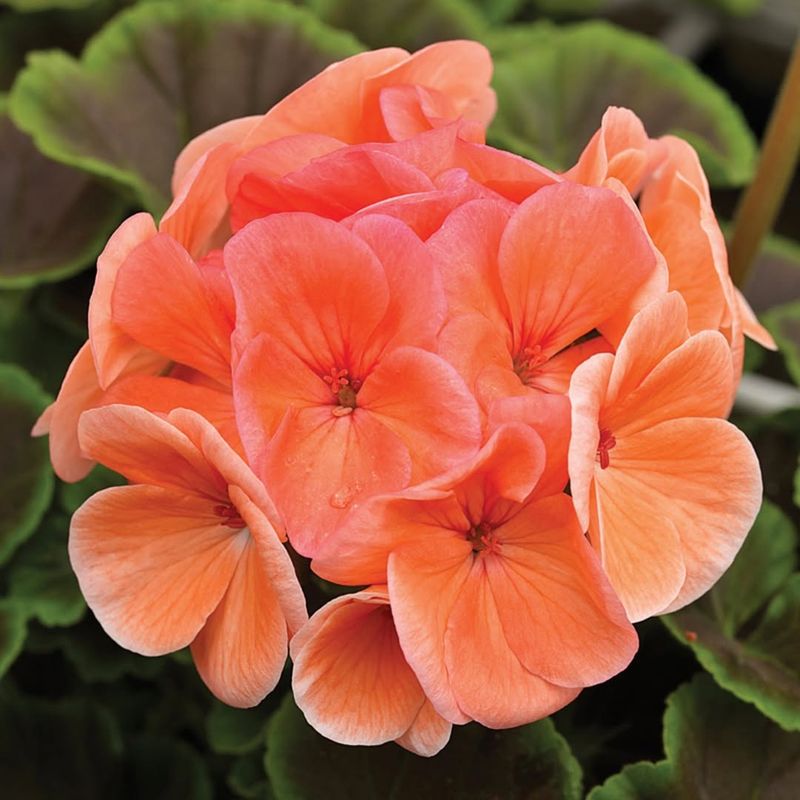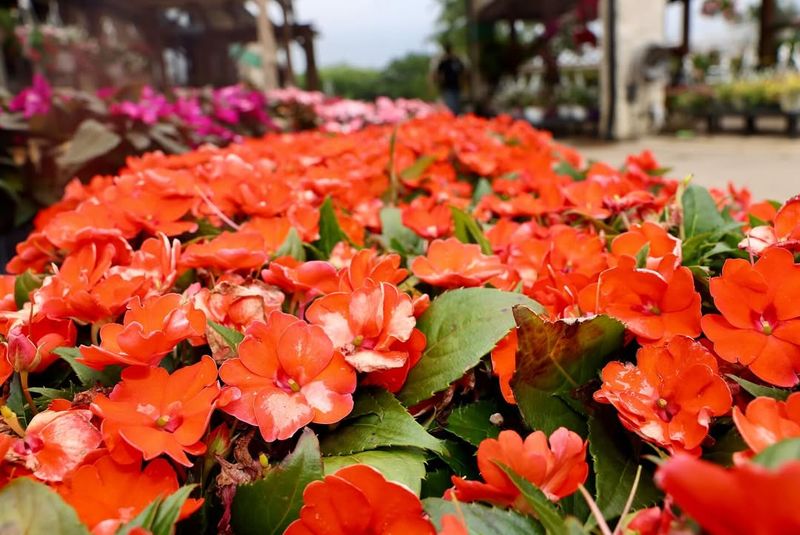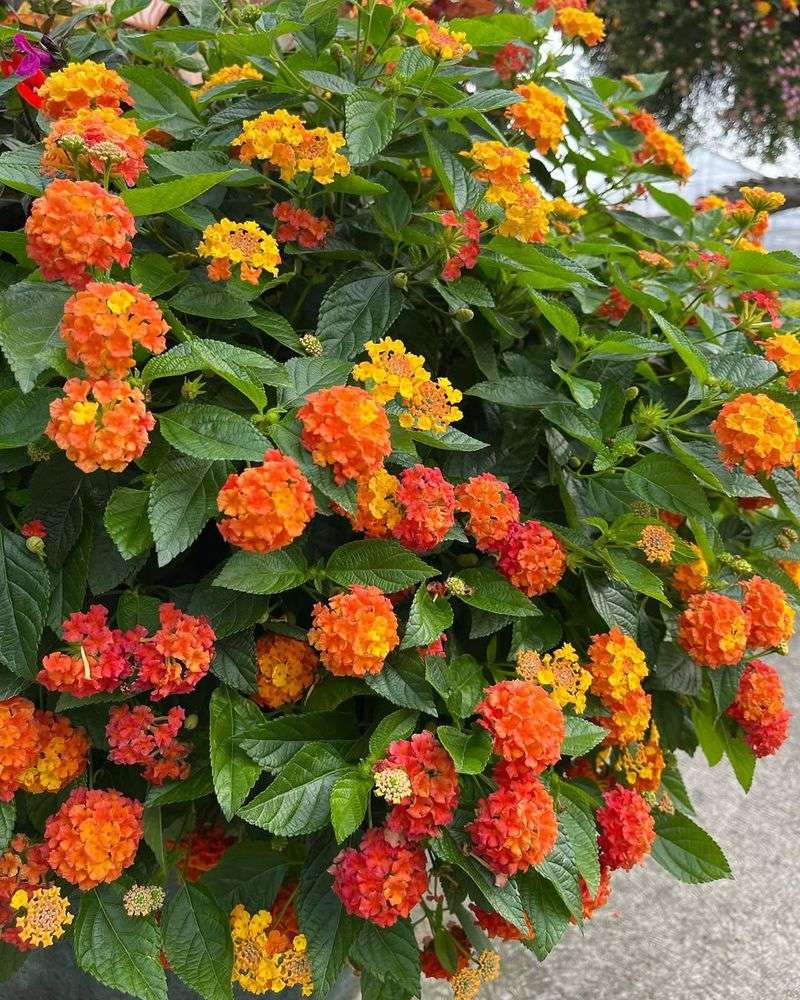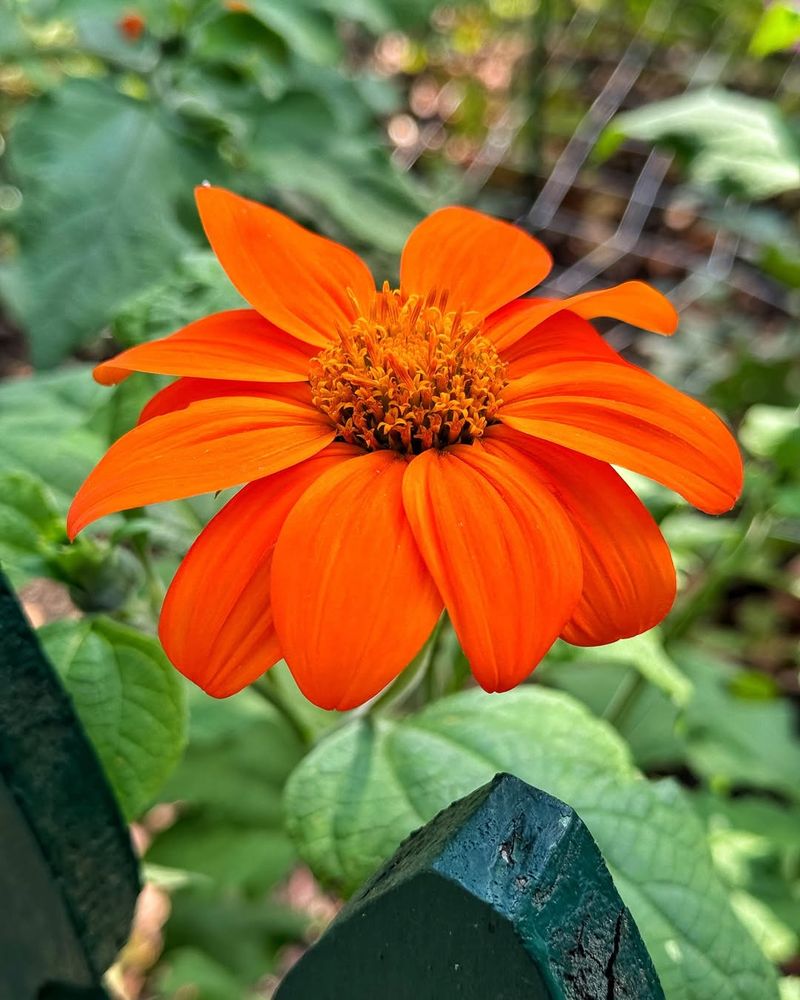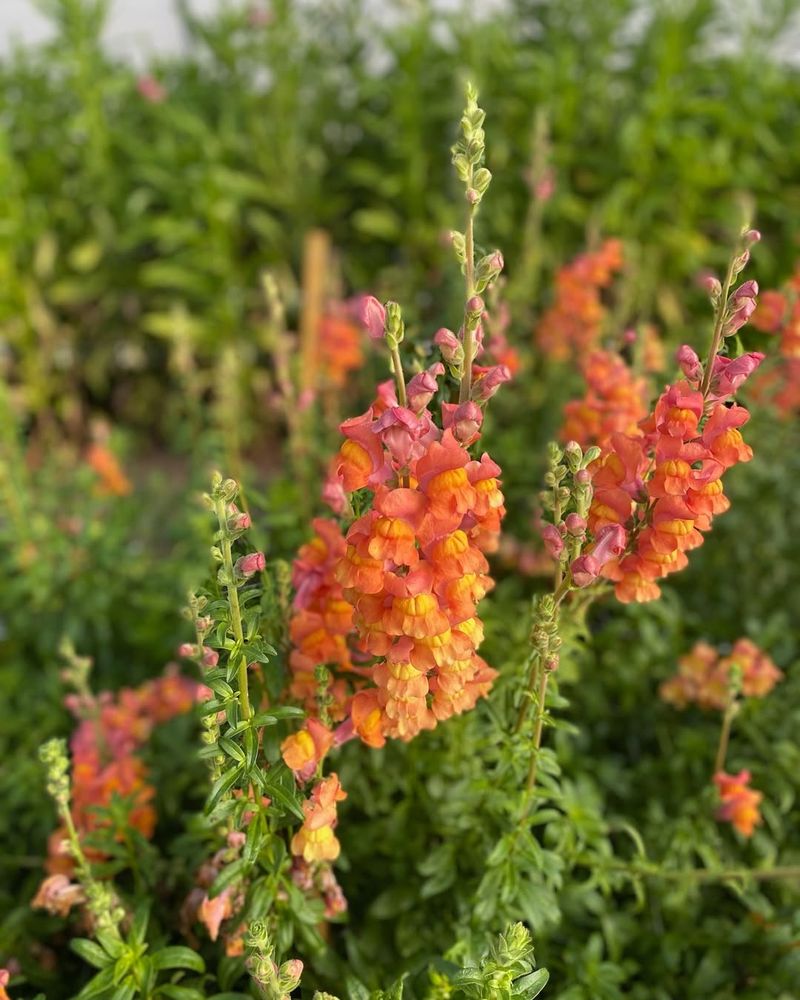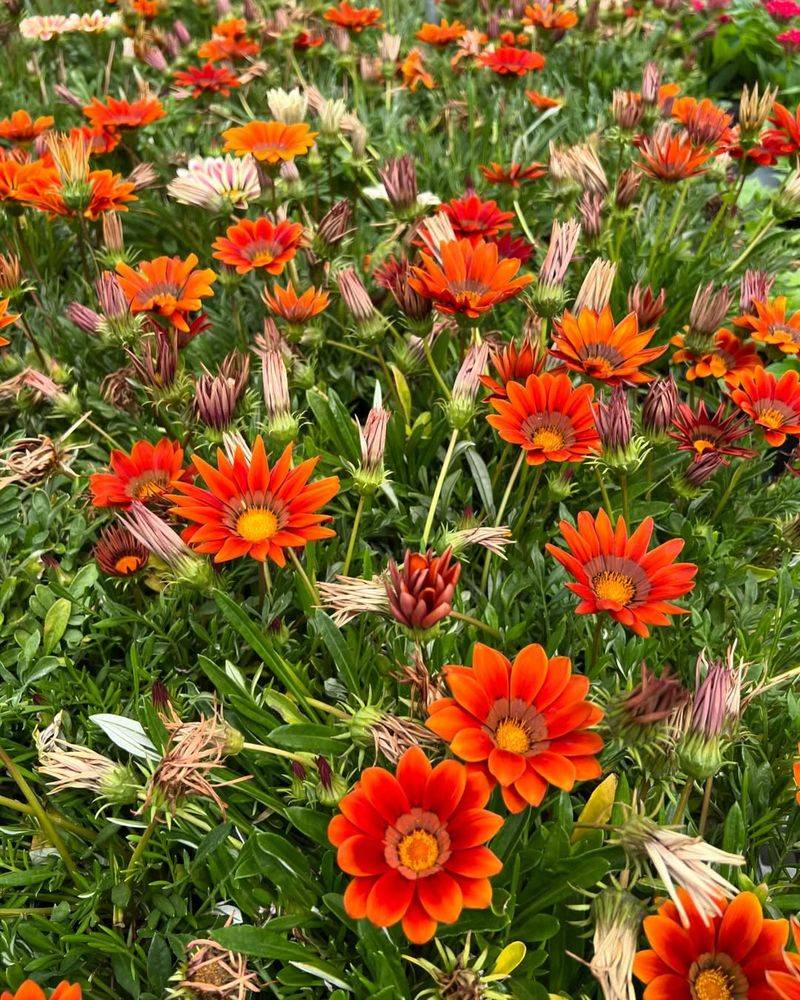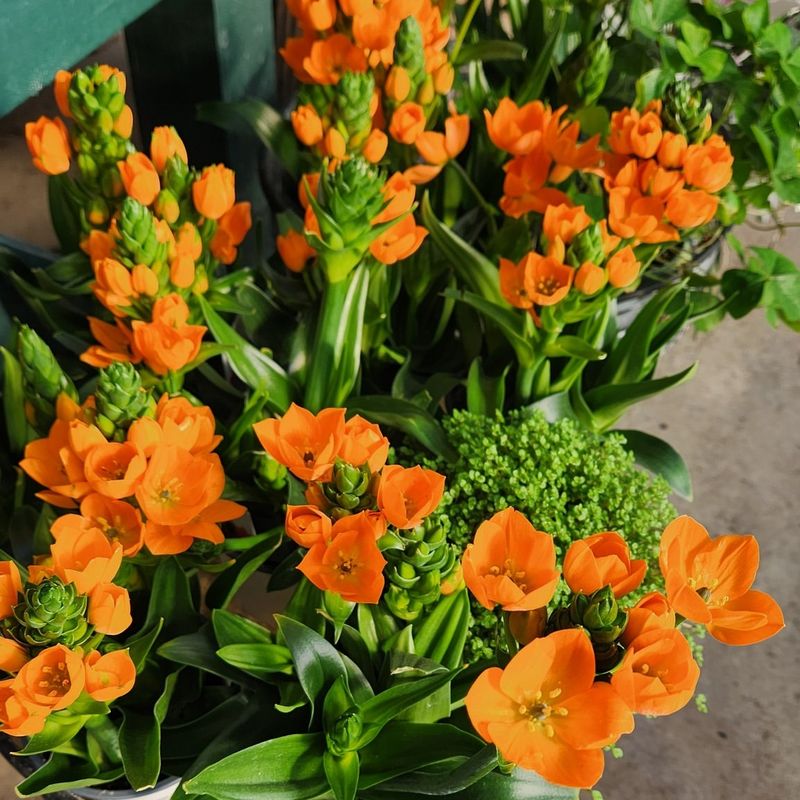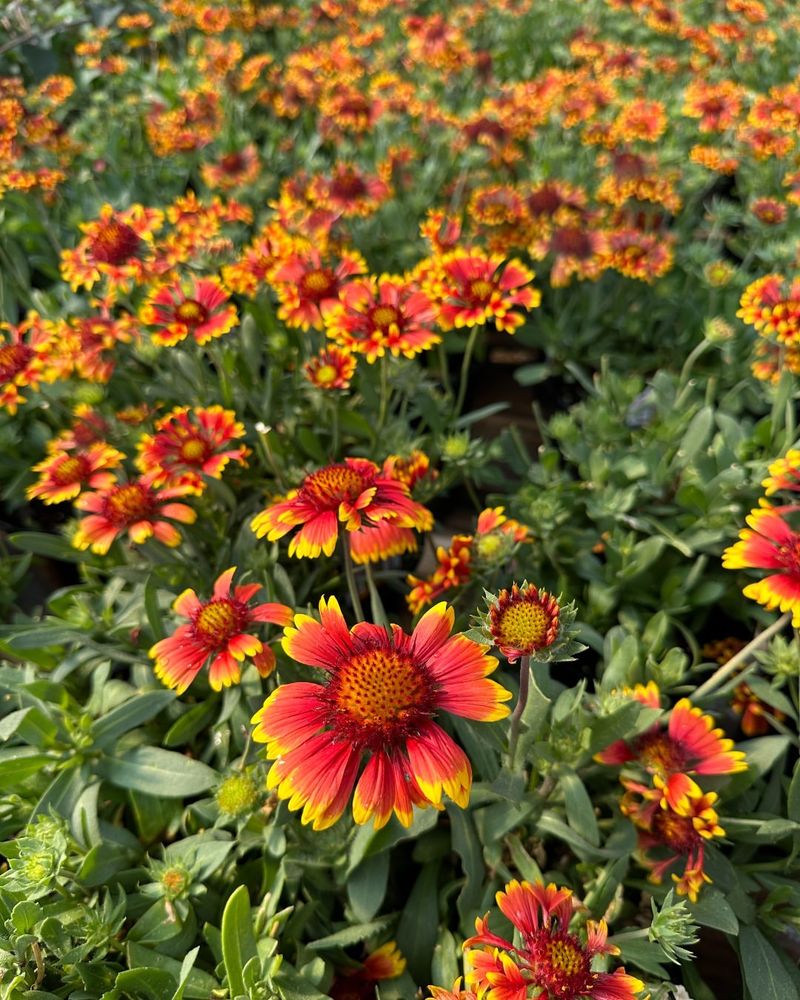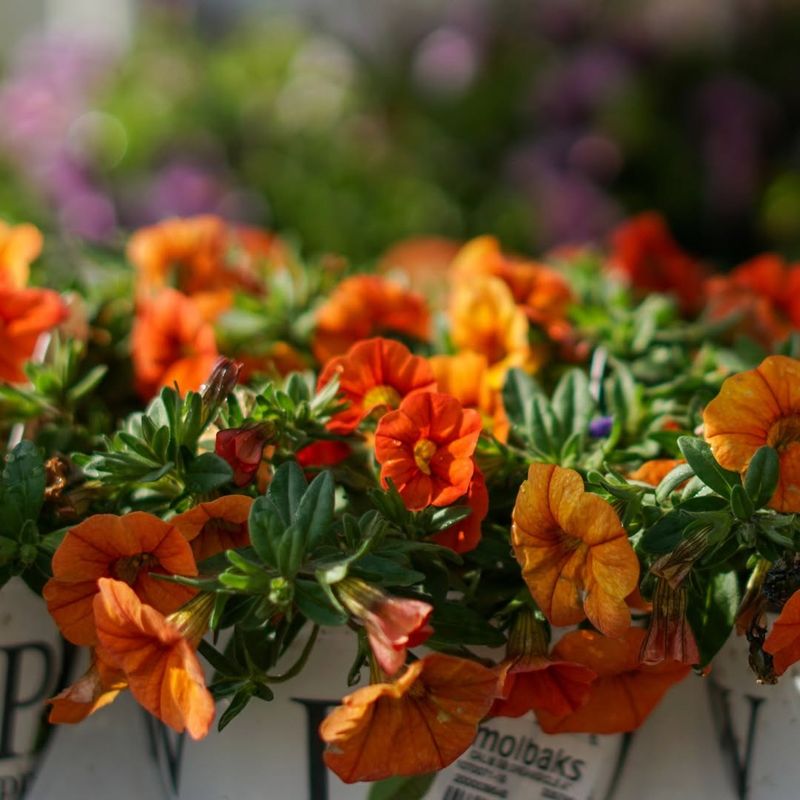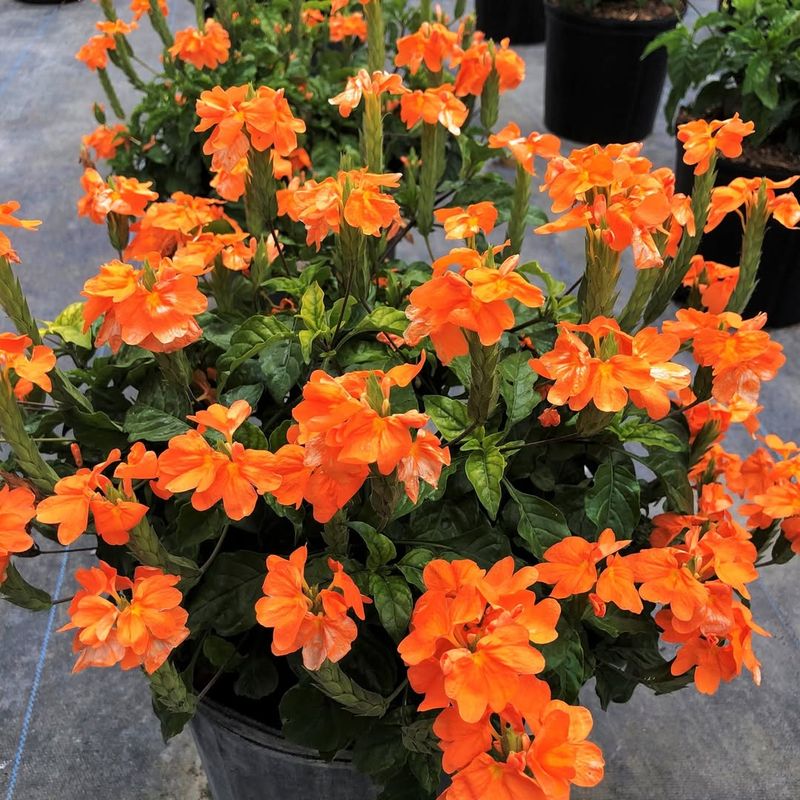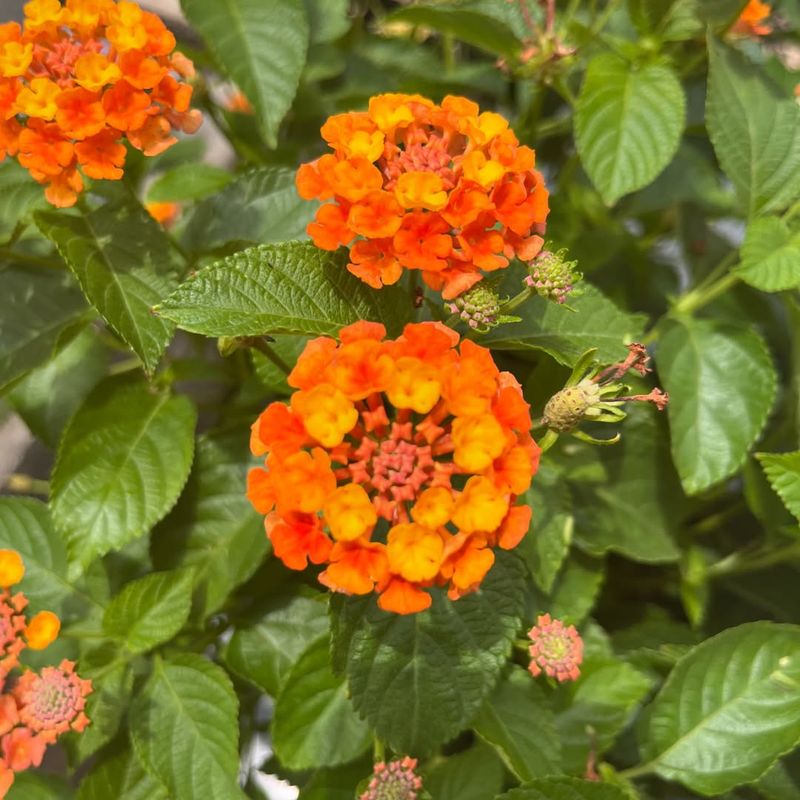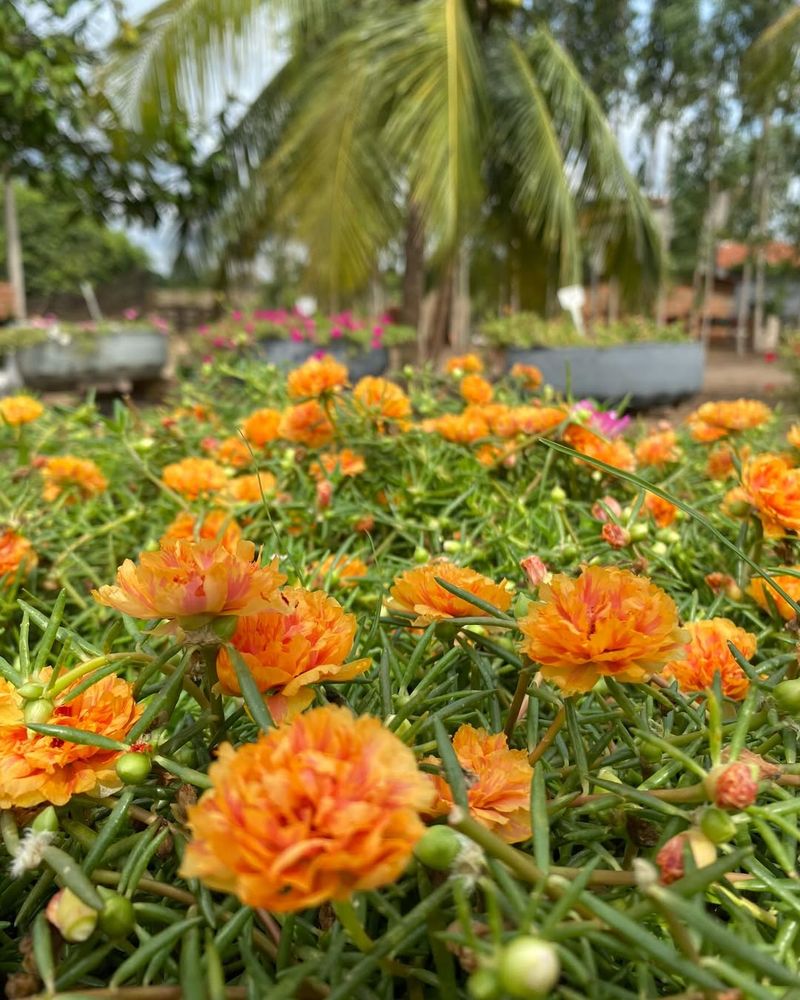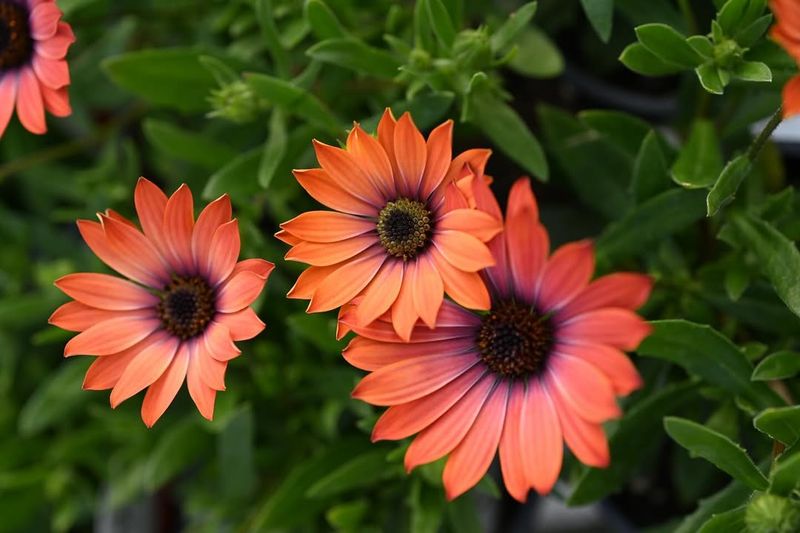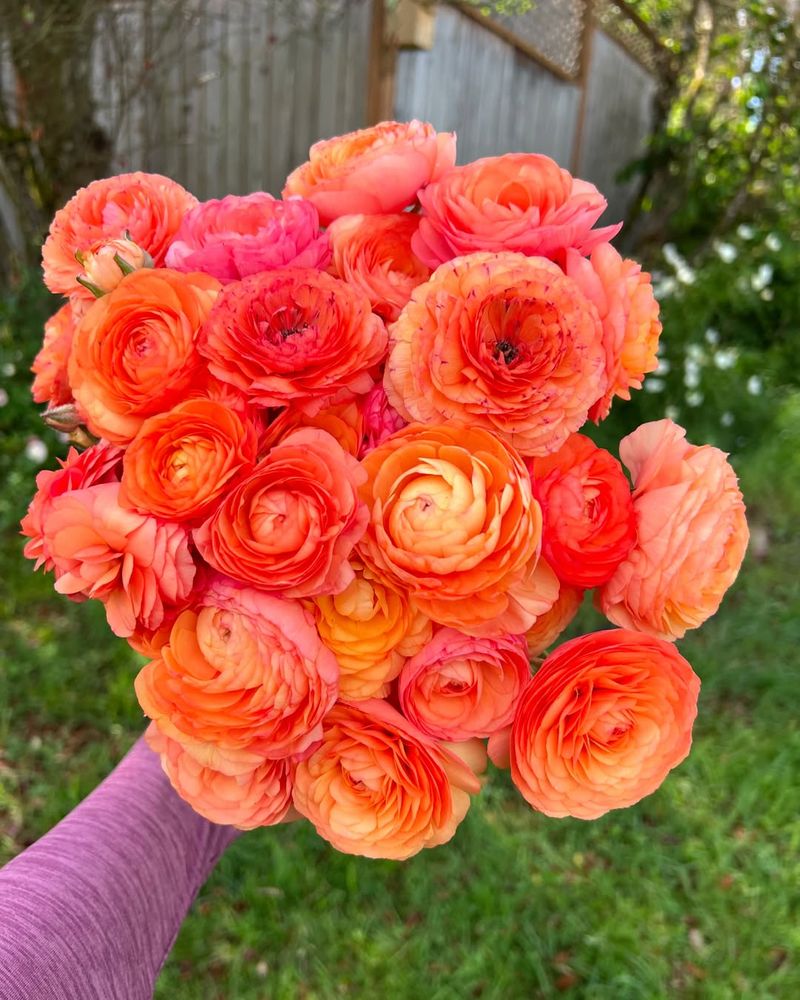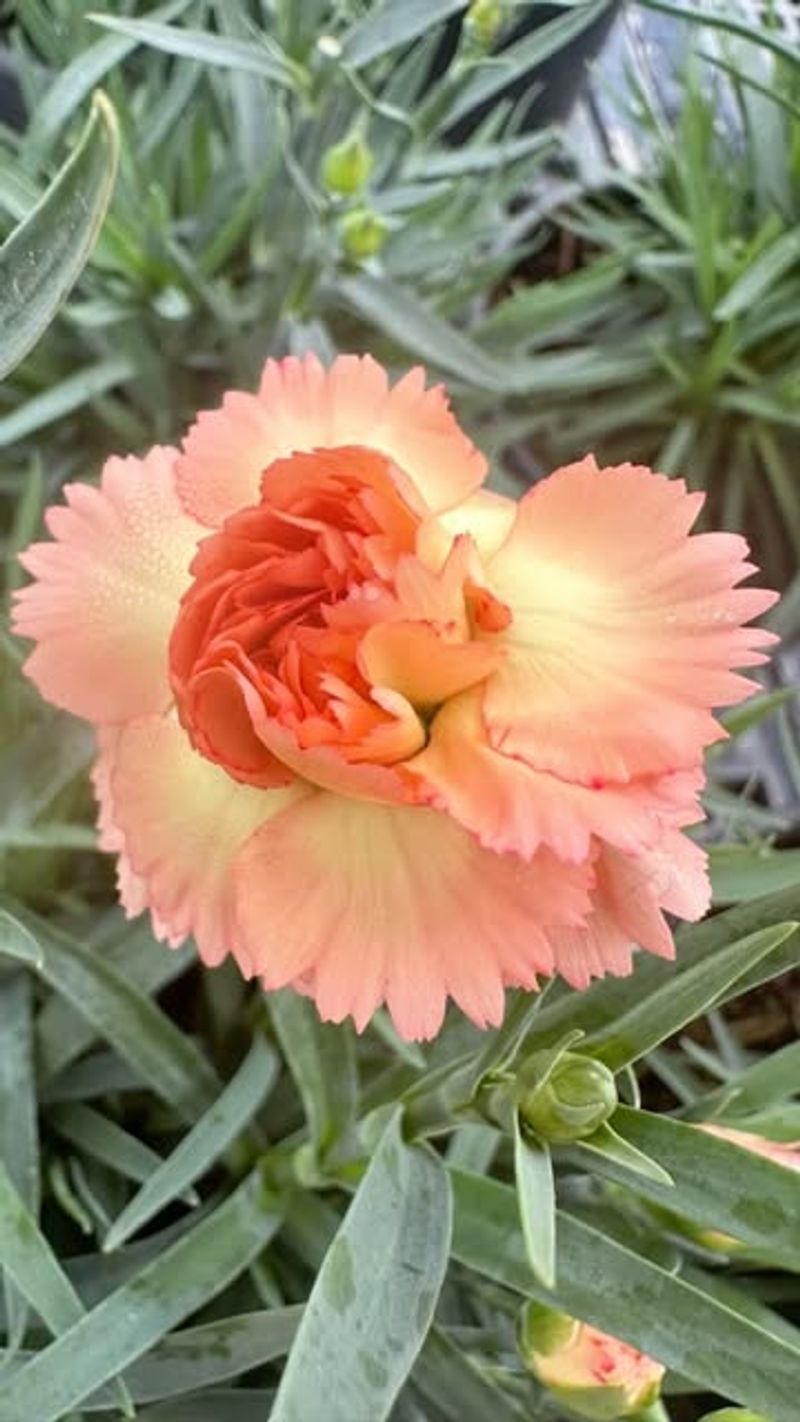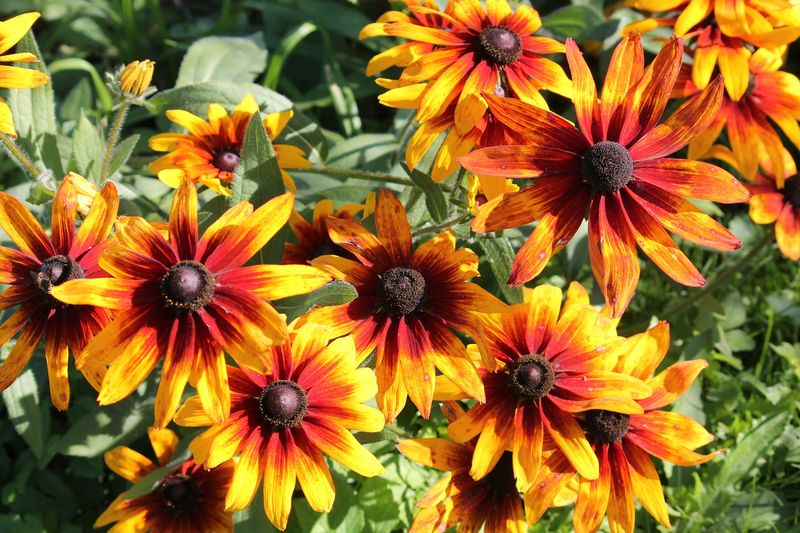Orange is the color of warmth, energy, and enthusiasm. It’s no wonder that annual flowers blooming in shades of orange can transform any garden into a vibrant spectacle. From marigolds to snapdragons, these blooms offer a spectrum of fiery hues. Let’s explore 28 spectacular flowers that grace us with their stunning orange blossoms.
1. Marigold
Marigolds are sunshine in plant form—bursting with bright orange blooms that practically glow against green foliage. Their scent is distinct, their petals are rich, and their cheer is unmatched.
These hardy annuals love full sun and well-drained soil, and they bloom non-stop with very little fuss. Deadheading old flowers keeps them looking fresh and vibrant all season long.
Tuck them between veggies to help repel pests naturally, or mass them in beds for a fiery floral carpet. They’re also perfect for fall containers when summer blooms start to fade.
2. Zinnia
Zinnias bring bold, blazing color in every size—from tiny button blooms to huge pom-poms. The orange varieties are especially vivid, often resembling mini suns with petals.
They thrive in full sun and tolerate heat and drought like pros, making them one of the easiest annuals to grow. Start from seed or transplant—you’ll get fast, full results either way.
Use zinnias to anchor your cutting garden or as a happy filler in borders. They attract butterflies like magnets and look amazing in fresh bouquets.
3. Nasturtium
Nasturtiums are the carefree charmers of the garden, blooming in warm, spicy shades of orange that pop against their rounded, lily pad-like leaves. Their blooms are edible and peppery, making them a double-duty delight.
They prefer lean soil and full sun, but they’ll also tolerate a bit of shade and neglect. Keep watering light, and they’ll thrive with minimal input.
Let nasturtiums spill from baskets or climb trellises for a vibrant, wild look. They’re perfect for adding a whimsical touch to veggie beds or cottage-style borders.
4. Cosmos (Bright Lights mix)
The ‘Bright Lights’ cosmos mix includes a sizzling range of oranges and golds that light up any space with airy elegance. Their daisy-like flowers sway beautifully on tall, slender stems.
They love poor soil and full sun, making them ideal for gardeners who forget to fuss. Once established, they’re drought-tolerant and bloom nonstop until frost.
Plant them en masse in wildflower patches or along fences where they can dance in the breeze. They’re a favorite among pollinators and pair beautifully with grasses or darker blooms.
5. Calendula
Calendula’s soft orange blooms have a nostalgic, vintage vibe, and their petals are also edible and skin-soothing. They have a soft, herbal scent and petals that open with the sun.
Plant them in full sun with well-draining soil, and they’ll reward you with a long season of cheerful color. They tolerate cool temperatures well and can bloom into fall.
Try calendula in raised beds, herb gardens, or tucked into veggie plots. They’re both beautiful and useful—a true garden multitasker.
6. Poppy (California Poppy)
California Poppies are wild and whimsical, with silky orange petals that close at night and open with the sun. Their ferny blue-green foliage adds even more visual charm.
These flowers love poor soil and full sun, thriving in spots where other plants struggle. Once established, they need little water and basically take care of themselves.
Scatter them in a meadow-style garden or use them to brighten rocky, dry areas. They’re perfect for naturalistic planting schemes or carefree, low-maintenance borders.
7. Begonia (Nonstop Orange)
‘Nonstop Orange’ begonias are full of personality with their lush, layered blooms in bold orange shades. They bring a tropical punch to even the shadiest garden corner.
These annuals prefer part shade and consistently moist soil, but they hate soggy roots—good drainage is key. Feed them regularly for a flush of color that truly doesn’t stop.
Ideal for hanging baskets, porch containers, or shaded window boxes, they bring brightness where most blooms won’t. Pair them with deep green foliage for maximum contrast.
8. Celosia
Celosia is pure garden drama, with its flame-like plumes or brainy crests in fiery orange hues. It’s a texture lover’s dream and a favorite for bold, high-impact beds.
Give it full sun and average soil, and it’ll bloom right through summer heat with very little attention. Deadheading keeps the plants tidy and encourages more blooms.
Use celosia as a standout centerpiece in containers or mass it in beds for a festival of form and color. It’s also a great flower to dry for lasting arrangements indoors.
9. Geranium (Orange varieties)
Orange geraniums deliver big clusters of glowing blooms with a slightly spicy scent and thick, textured leaves. They’re classic and charismatic—perfect for adding structure and color.
These sun-lovers need well-drained soil and regular deadheading to keep blooming strong. Let the soil dry slightly between waterings to avoid root rot.
Try them in terra-cotta pots or classic garden urns for that timeless cottage feel. They mix well with blue or purple companions for bold contrast and balance.
10. Impatiens (Orange varieties)
Orange impatiens bring a warm, glowing pop of color to shady spots where bold hues are hard to find. Their lush, compact shape fills in beautifully and requires little upkeep.
They thrive in partial to full shade with moist, well-drained soil and regular feeding. Keep them watered during hot spells to avoid wilting.
Use them to fill under trees, line shaded borders, or spill from planters on covered porches. Their consistent color and soft mounding habit make them a landscape favorite.
11. Lantana (Orange varieties)
Orange lantana is a fiery garden workhorse, producing clusters of tiny blooms that shift shades as they mature. The result is a stunning mosaic of oranges, yellows, and pinks.
It thrives in full sun and dry, well-drained soil, making it ideal for hot climates and containers. Once established, it’s nearly drought-proof and blooms nonstop.
Use lantana in hanging baskets or large planters where it can cascade over the edges. Butterflies flock to it, and deer tend to avoid it—so it’s beauty with built-in benefits.
12. Tithonia (Mexican Sunflower)
Tithonia dazzles with tall stems and bold, daisy-like blooms in deep, fiery orange. It adds a wild, almost tropical flair to the garden with its large, velvety leaves.
This annual needs full sun, well-drained soil, and room to stretch—it can grow up to 6 feet tall! Deadheading encourages even more blooms, and the show lasts until frost.
Plant tithonia in the back of borders or as a bold anchor in butterfly gardens. Monarchs absolutely love it, and its height makes it a natural screen or garden divider.
13. Snapdragon (Orange varieties)
Snapdragons are playful and full of personality, with tall stalks of vibrant orange blooms that “snap” when squeezed. Their unique flower shape brings vertical interest and texture.
They love full sun to part shade and cool temperatures—perfect for spring and fall plantings. Regular deadheading and rich, well-drained soil keep them blooming longer.
Use snapdragons to line pathways, fill formal borders, or add height to container arrangements. They also make beautiful, long-lasting cut flowers for cheerful indoor vases.
14. African Daisy (Dimorphotheca)
African daisies offer clean, bold daisy-like blooms in vivid oranges with striking centers. Their petals often have a metallic sheen that catches the light in gorgeous ways.
They thrive in sunny, dry spots and don’t mind poor soil—just avoid overwatering. These annuals love heat and reward you with bloom after bloom all season.
Use them in xeriscape designs, rock gardens, or sunny container combos. Their tidy growth habit makes them great for edging too.
15. Gazania
Gazanias are sun-worshippers with bold, stripy orange blooms that close at night and reopen with the sun. Their daisy-like flowers and silvery foliage add sparkle to any planting.
These annuals thrive in hot, dry conditions and poor soil, so they’re perfect for low-maintenance landscapes. Just plant them in full sun and enjoy the show.
Use gazanias in borders, pots, or to fill sunny problem spots like roadside gardens. They’re compact, colorful, and surprisingly tough for such pretty faces.
16. Calibrachoa (Orange varieties)
Calibrachoa, often called “million bells,” brings a non-stop cascade of small, petunia-like orange blooms. The flowers may be tiny, but they pack a serious color punch.
They thrive in full sun and well-drained soil, and love consistent watering—just don’t let them sit soggy. A little fertilizer every couple weeks keeps the blooms coming.
Perfect for hanging baskets, window boxes, or as a trailing filler in mixed containers, they’re total crowd-pleasers. Calibrachoa adds a vibrant edge to porch displays and sunny patios.
17. Dahlia (Annual types)
Orange dahlias are nothing short of floral fireworks, bursting in big, bold blooms that steal the spotlight. Their geometric petals and warm color tones add instant elegance.
They love full sun, rich soil, and steady watering, though annual types are often grown from seed or tubers each season. Pinching and deadheading help extend the show.
Use dahlias as dramatic focal points in beds or large containers. They’re also unbeatable as cut flowers—just one bloom can transform a bouquet.
18. Blanket Flower (Gaillardia pulchella)
Blanket flowers blaze in sunset shades of orange, red, and gold, giving gardens a wild, prairie vibe. Their daisy-like blooms are long-lasting and love the sun.
They thrive in hot, dry spots with sandy or average soil, and they don’t mind skipping a watering or two. These hardy bloomers are also resistant to deer and drought.
Plant them en masse in borders, pollinator gardens, or anywhere that needs a burst of fiery color. Their blooms attract bees, butterflies, and admiration all summer.
19. Petunia (Orange varieties)
Orange petunias are bold and joyful, bringing juicy, citrusy color to containers and flower beds. They have a velvety texture that glows under sunlight.
They prefer full sun and rich, well-drained soil, and benefit from regular feeding and deadheading. Petunias are easy to grow and bloom their hearts out all season.
Use them in mixed planters, window boxes, or to edge a bright border. Pair them with purples or blues for a vibrant color clash that sings.
20. Crossandra
Crossandra, sometimes called the “firecracker flower,” delivers brilliant orange blooms with a tropical flair. Its lush, glossy leaves make the color pop even more.
It prefers part sun to bright indirect light and thrives in warm, humid conditions—perfect for summer displays. Keep soil consistently moist and give it a sheltered spot outdoors.
Plant crossandra in patio pots, porch planters, or bring it indoors as a vibrant houseplant in cooler months. Its unique flower form adds interest wherever it’s placed.
21. Coreopsis (Annual types)
Coreopsis, or tickseed, bursts with cheerful orange-yellow flowers that dance above fine green foliage. These blooms have a laid-back, prairie charm that fits into any garden.
They thrive in full sun and lean soil, blooming like champs even through heat and dry spells. Just deadhead to keep the flower show going strong.
Coreopsis is perfect for naturalistic plantings, cottage gardens, or pollinator patches. It sways beautifully in the breeze and adds a carefree vibe to any setting.
22. Verbena (Orange-toned cultivars)
Orange verbena delivers clusters of tiny, brilliant flowers that bloom tirelessly in sunny spots. Their low, spreading habit makes them a fantastic groundcover or border filler.
They prefer full sun, good drainage, and regular watering—though they tolerate drought once established. Trim them back mid-season for a fresh flush of blooms.
Plant verbena in the front of beds, spill it over retaining walls, or mix into bright, pollinator-friendly pots. Their color and scent are irresistible to butterflies.
23. Portulaca (Moss Rose)
Portulaca is a sun-worshipping ground-hugger with glowing, almost neon-orange blooms. Its succulent leaves and carefree nature make it a winner for dry spots.
This annual thrives in hot, sandy soil and full sun, needing very little water once established. It closes its flowers at night, opening again with the morning light.
Use portulaca in rock gardens, container edges, or even between stepping stones. It’s a go-to for tough places where nothing else seems to grow—but it looks like you tried!
24. Osteospermum (Orange cultivars)
Osteospermum, or African daisy, boasts crisp, daisy-shaped orange blooms with metallic sheens and contrasting centers. They look almost unreal in the best way.
They love full sun and cool temps—making them perfect for spring and fall gardens. Keep soil lightly moist and give them room to spread.
Use osteospermum in containers or along borders where their tidy shape and bold color can shine. Their unique look makes them a standout in both modern and traditional garden styles.
25. Ranunculus (Orange varieties)
Ranunculus produces rose-like blooms packed with layers of delicate, silky petals in rich orange shades. They’re absolutely breathtaking in full bloom.
These cool-season annuals prefer full sun and well-drained soil, and grow beautifully from tubers in spring. Keep them moist, especially as they start to bloom.
Plant ranunculus in cutting gardens, wedding borders, or formal flower beds for a touch of luxury. Their flowers last a surprisingly long time in bouquets, too.
26. Dianthus (Orange shades in mixes)
Dianthus, known for its sweet scent and frilled petals, comes in surprising orange hues in some modern mixes. The soft, sunset tones offer a unique twist on this cottage classic.
It thrives in full sun with well-drained soil and appreciates regular deadheading to keep the flowers coming. Dianthus enjoys cooler weather, making it ideal for spring or fall plantings.
Use orange dianthus in border fronts, rock gardens, or to soften pathways with color and fragrance. It also works beautifully in petite containers for tabletops or window ledges.
27. Helenium (Sneezeweed – annual varieties)
Helenium, often called sneezeweed, explodes with daisy-like orange blooms tipped in gold or russet. Its warm palette feels like autumn captured in flower form.
This sun-loving bloomer thrives in average soil and doesn’t mind heat or dry spells. Keep the soil slightly moist and deadhead to extend its floral fireworks.
Plant helenium in prairie-style borders or mix with ornamental grasses for texture and movement. It also makes a fantastic late-season companion to sunflowers or rudbeckia.
28. Rudbeckia hirta (Gloriosa Daisy – annual types)
Rudbeckia ‘Gloriosa Daisy’ is the garden’s golden-orange beacon with its bold, dark-eyed centers and sunny petals. These large, cheerful blooms scream summer and last well into fall.
It thrives in full sun with well-draining soil and can handle dry spells with ease. Once it gets going, it needs very little care beyond a good haircut here and there.
Use rudbeckia to anchor borders or mix into wildlife-friendly beds—bees and butterflies love it. It also shines in mass plantings or rustic-style bouquets.

